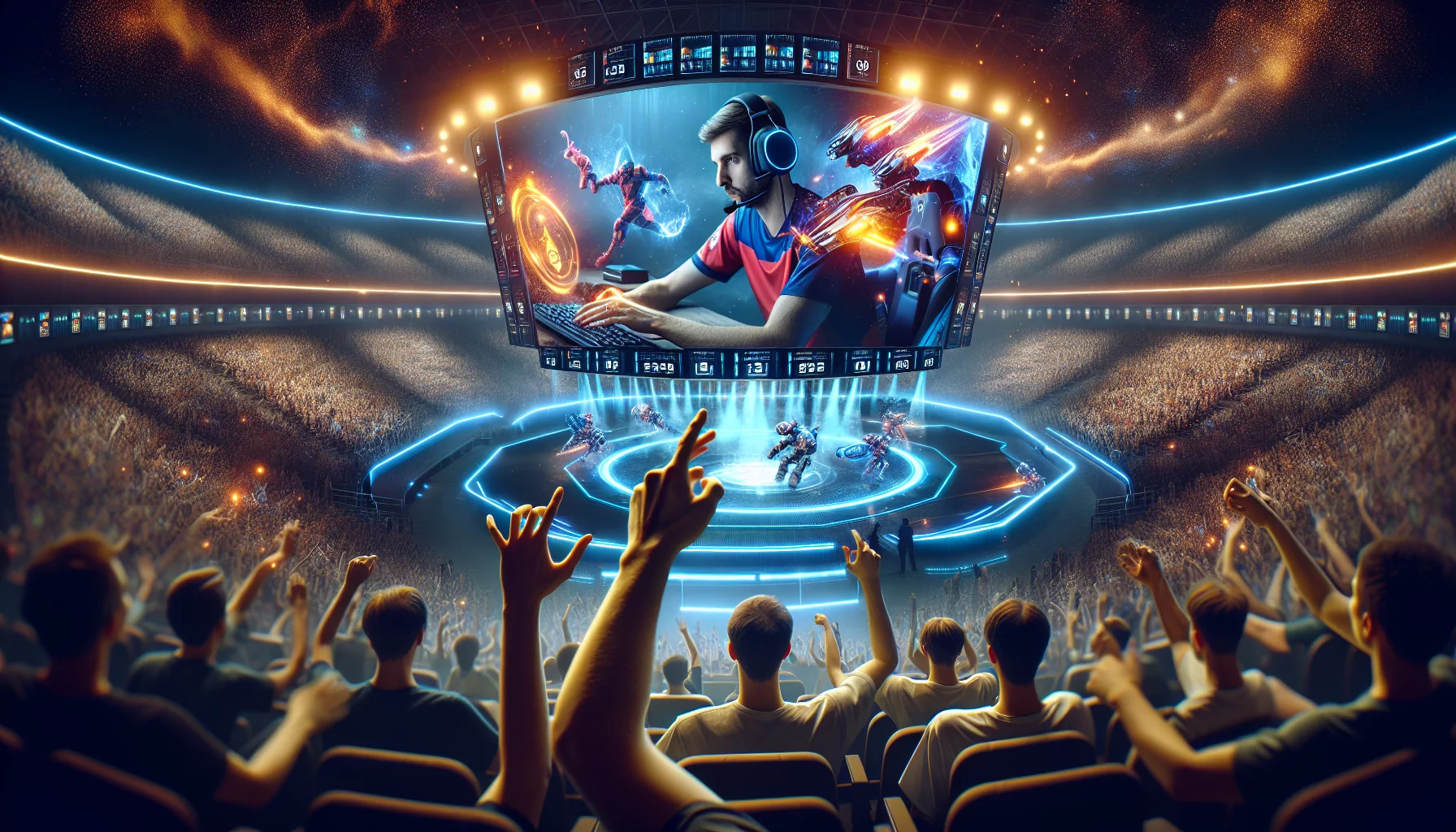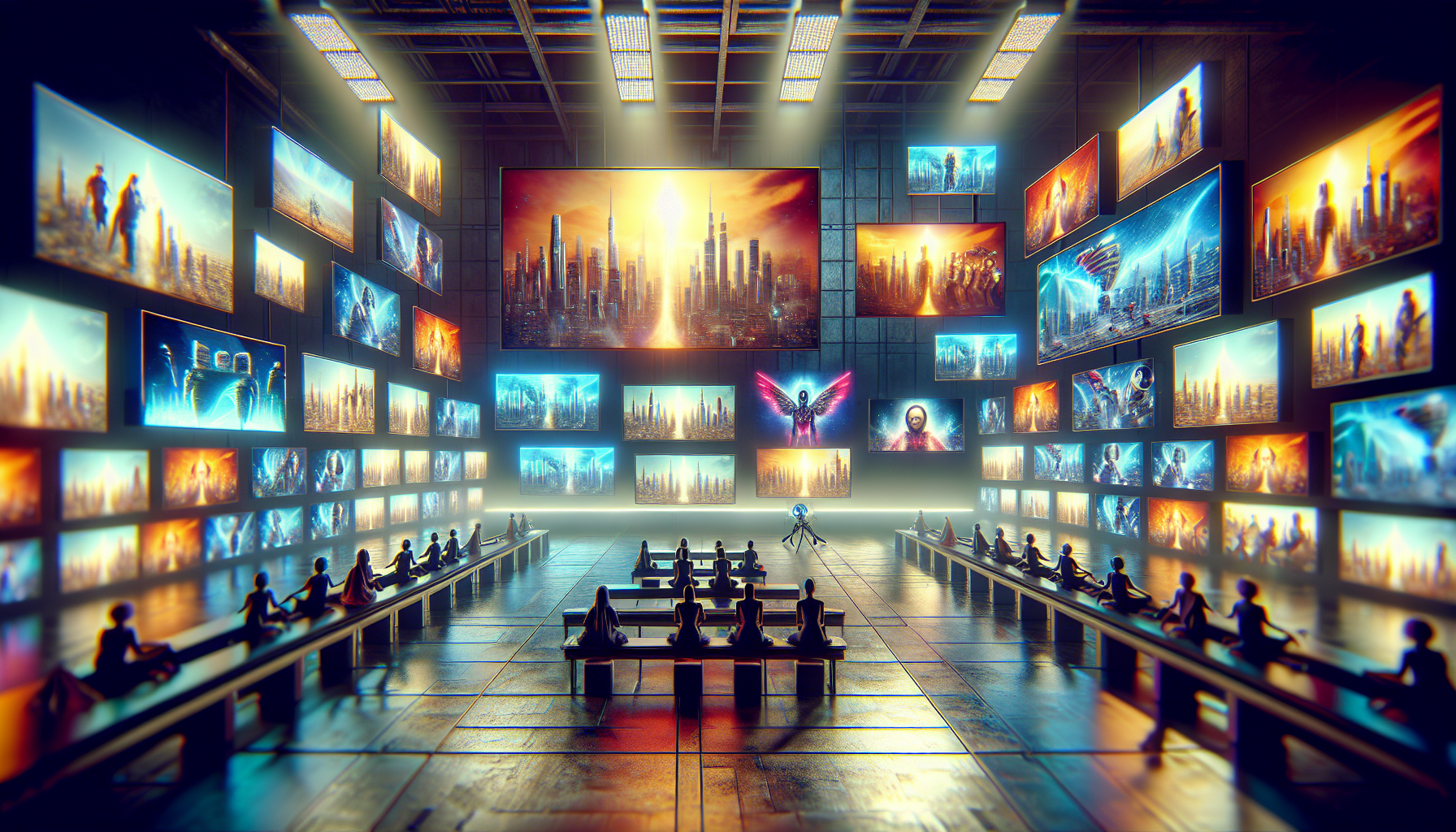Adverts
High-definition graphics have played a fundamental role in the evolution of video games, revolutionizing the way players experience virtual worlds.
From the early days of 8-bit games to today's hyper-realistic landscapes, the gaming industry has gifted us with titles that not only delight the eyes, but also redefine technical and creative standards.
Adverts
This text invites you to travel back in time, exploring the games that made history with their graphic innovations.
With each new generation of consoles and PCs, graphics capabilities expand, offering a richer and more immersive visual experience. Who doesn’t remember the impact caused by the launch of titles like “Final Fantasy VII” or “The Legend of Zelda: Ocarina of Time”, which, with their innovative graphics, captivated millions of players around the world?
Adverts
These games not only introduced new rendering techniques, but also raised the bar for consumer expectations, creating a new standard for quality.
The advancement of graphics not only affects the aesthetics of games, but also the way stories are told. Games like “The Last of Us” and “Red Dead Redemption 2” exemplify how visually stunning environments can complement complex narratives, creating unprecedented immersion.
High definition allowed developers to explore minute details, transforming settings and characters into almost cinematic experiences.
Furthermore, the cultural impact of these games is undeniable. They not only influence the entertainment industry as a whole, but also inspire independent developers to pursue their creative visions using the latest graphics technologies. This democratization of access to advanced tools allows new voices and styles to emerge, further enriching the gaming landscape.
In this context, this text aims to examine in detail some of the most iconic games that stood out for their high-definition graphics. By exploring the legacy and innovation of each title, it becomes clear how graphical evolution has shaped the trajectory of electronic games and continues to influence the future of the industry. Embark on this journey and discover the visual milestones that transformed games into one of the most dynamic and impressive art forms today. 🎮✨

The First Pixels of Glory: The 8-Bit Era
Ah, the 8-bit era, where the resolution was so low that we needed a magnifying glass just to distinguish Mario from a mushroom. These games were the beginnings of high-definition graphics… if we consider that high-definition is a very relative concept! 😂 Who remembers “Super Mario Bros.”? In fact, it was always a mystery whether Mario’s mustache was really a mustache or just a badly made stain.
Despite their rudimentary graphics, these games were magical. They managed to make our imagination fill in the missing pieces. Mario didn’t need a lot of pixels to become a hero; all he needed was a controller, a little imagination, and voila: we were immersed in a world full of adventures. It was the digital equivalent of drawing in the sand, where less was more.
The Leap to 16-Bits: Details that Make the Difference
Now, let's talk about the transition to 16-bit. It was like going from a black and white movie straight to 4K, only not. The graphics were so sharp that you could tell a guava tree from an apple tree in “Sonic the Hedgehog.” 🎮 Sonic ran so fast that he looked more like a blue blur, but hey, at least you could see he had legs.
Games like “The Legend of Zelda: A Link to the Past” took graphics to a level that was considered the pinnacle of visual perfection at the time. We would look at those landscapes and say, “Wow, this is practically a work of art.” And it really was, in terms of technology and design for that time. Oh, if only I could explain to Link that all of that would one day become nostalgia!
The 3D Revolution: Polygons and Quantum Leaps
Ah, the advent of 3D, when game characters stopped being flat figures and started to gain volume, looking like they had been to the gym. “Super Mario 64” was a turning point, and Mario could finally jump in three dimensions. It was like he had discovered the third dimension of happiness! 🕶️
These games presented a new challenge: moving around in a three-dimensional space. Before, the only thing to worry about was moving left or right. Now, there was a new dimension to explore and, of course, new places to fall. It was like going from a bike with training wheels to a unicycle. Challenging? Yes. Fun? Absolutely!

The Advent of Realistic Textures: Welcome to the Future
Moving forward to the era of realistic textures, with games that turned every leaf, every drop of water, into a visual spectacle. “Crysis” was a milestone in this evolution, a game so heavy that if someone managed to run it at maximum speed, a NASA technician would show up at the door offering them a job. 🚀
The details were so minute that you could see every pore on the characters' faces, every strand of hair moving in the wind. This is no exaggeration, it was a true quantum leap in the way we perceived games. And of course, it made us reflect on the need for monitors with increasingly higher resolutions to appreciate all this digital beauty.
Open World Games: A Giant Canvas for Creativity
With the advent of open worlds, games became more than just a pastime; they became immersive experiences. “The Witcher 3” and “GTA V” showed us that it was possible to create worlds where every corner had a story to tell. 🚗
These games expanded the concept of high-definition graphics by offering not only detailed environments, but also vast horizons that could be explored. Every sunset, every shadow cast was a carefully crafted piece of art. And we, the players, were the artists, painting each moment with our own actions and choices.
Elements That Made Open Worlds Memorable:
- Environmental Details: Scenarios that change with time and climate.
- Interactivity: Elements of the environment that respond to the player's actions.
- Emergent Narratives: Stories that unfold according to your decisions.
- Free Exploration: Vast worlds where curiosity is rewarded.
The Future of Graphics: Virtual Reality and Beyond
Finally, we arrive at the future of graphics, where virtual reality is redefining what “immersion” means. With VR headsets, players can literally step into games and experience worlds like never before. 🌌
We’re still in the early days of this technology, but the potential is limitless. Imagine walking around a virtual city and being able to interact with every person and object as if you were actually there. With technology continuing to advance, it’s exciting to think about where we’ll be in just a few years. Who knows, maybe one day we’ll be playing in virtual worlds so detailed that it’ll be hard to tell where the game ends and reality begins!

Conclusion
The evolution of high-definition graphics in video games has profoundly transformed the gaming industry, offering more immersive and realistic visual experiences. Games like “Crysis” initially set new standards by exploiting the potential of available hardware, challenging both developers and players to rethink their expectations. This transformation has not only expanded the reach of games, but also redefined storytelling and gameplay, delivering cinematic experiences that were previously unimaginable.
Additionally, games like “The Last of Us” and “Red Dead Redemption 2” demonstrated how combining high-definition graphics with immersive storytelling can create rich and exciting worlds. These titles not only delighted visually, but also touched players on an emotional level, highlighting the importance of innovative graphic design to the success and longevity of games.
Ultimately, as technology continues to advance, we can expect gaming graphics to become even more impressive, driving new innovations and possibilities. As such, HD graphics are not just a passing fad, but a crucial element that will continue to shape the future of the gaming industry. 🌟 Therefore, when reflecting on the impact of HD graphics, it is clear that they have not only marked the history of gaming, but also opened doors to a bright future full of possibilities.




